By last week, consensus had built that the economy was in trouble, even among many otherwise Right-leaning economists and commentators. On one side, a clamour grew for concrete and actionable solutions, starting with an acknowledgement from the government that it was in economic trouble. On the other hand, a question that has troubled political analysts since the 2019 election resurfaced – does any of this matter electorally, or is the Narendra Modi mandate recession-proof?
The economy is certainly on people’s minds. The CVoter tracking poll interviews 8,000 respondents across the country every day. The share of respondents who believe that their living standards will improve over the next year has fallen since the end of June. The number of respondents who fear that it will deteriorate – although in minority – has grown.
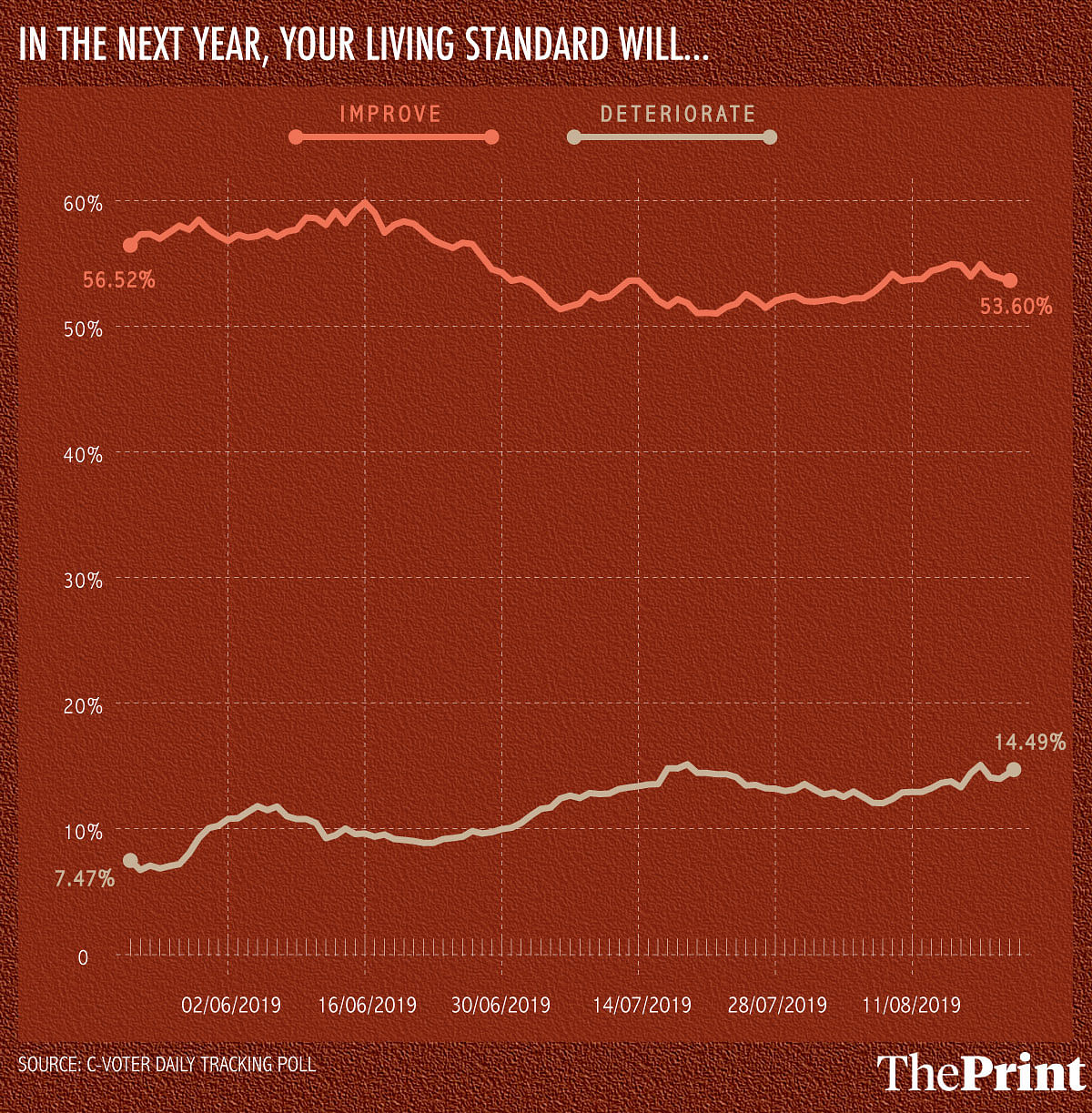
Four of the top five issues that respondents identified as facing the country were economic (terror attacks have largely receded from the public imagination following the Pulwama attack and the Balakot airstrikes), and a growing sixth was the UPA bugbear – rising prices.
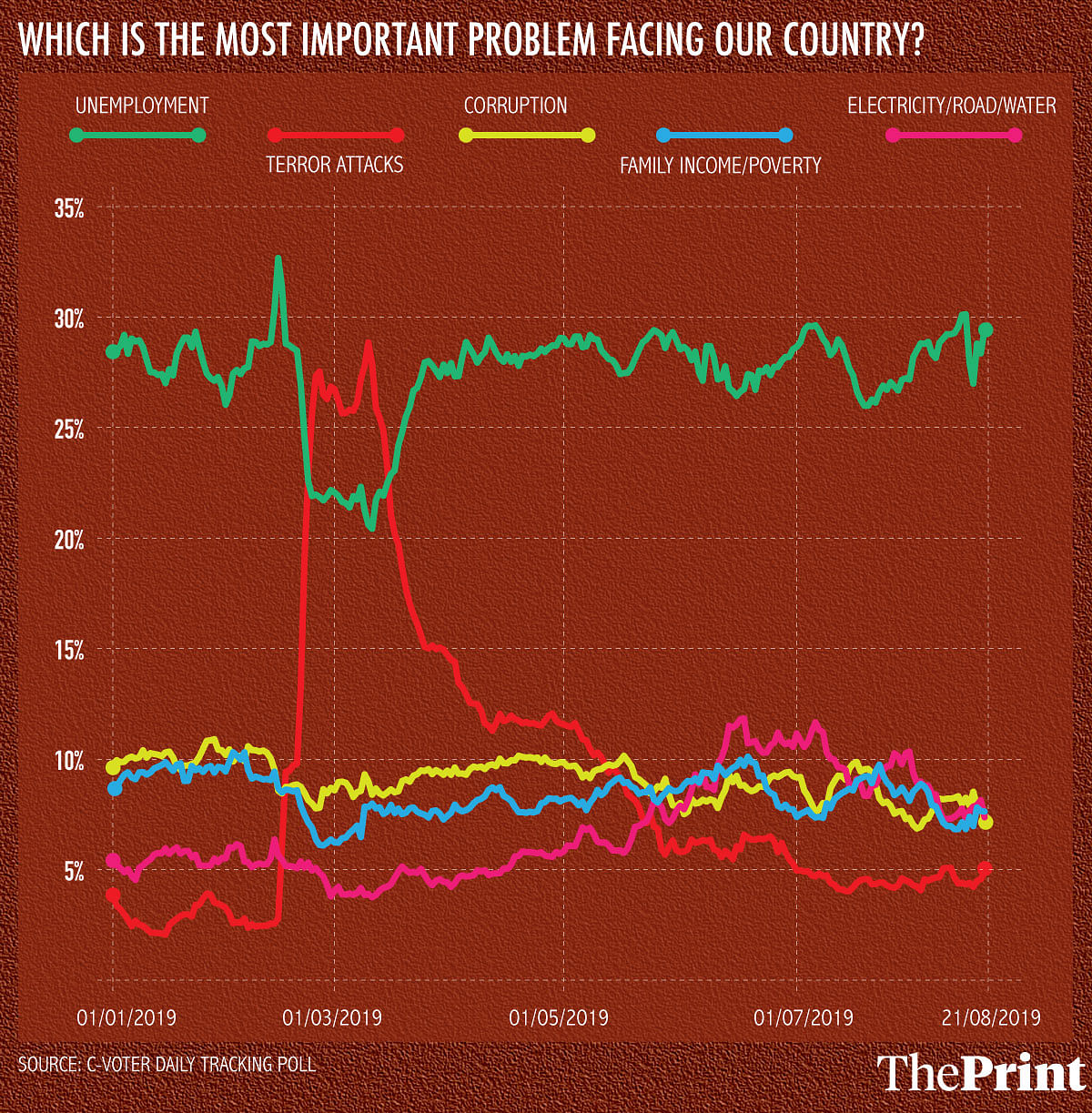
Yet, it would appear that the faltering economy has not dented Modi’s popularity. In the same CVoter tracking poll, Modi’s popularity is the highest it has been since the beginning of this year. If there was a “Balakot bump”, there seems to be a further post-victory rise, and a more recent Kashmir effect. Unsurprisingly, the NDA was respondents’ overwhelming choice as the party that could fix the country’s biggest problems.
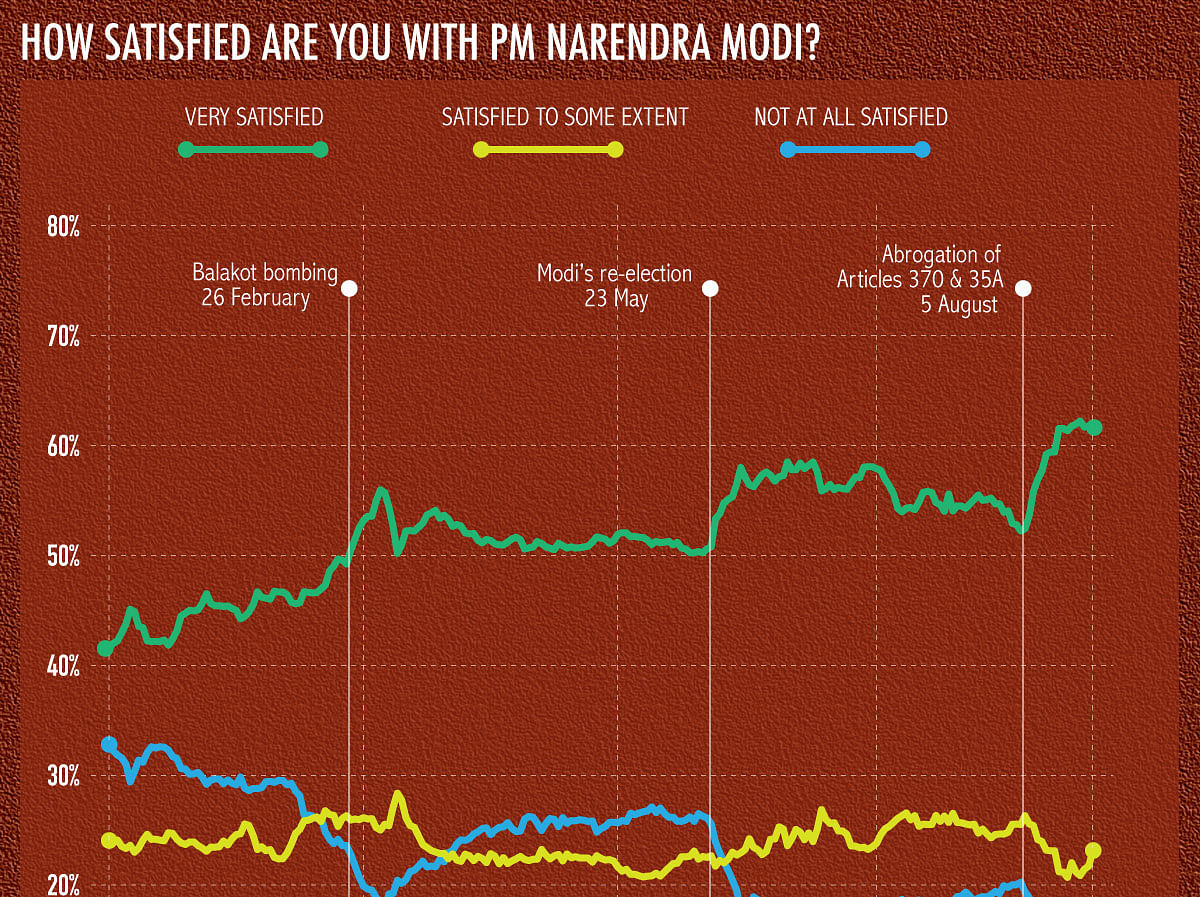
Also read: Demonetisation, GST, now Kashmir. Modi govt doesn’t think beyond the first step
Language of the economic right
So, should political analysts assume that the economy does not matter to Modi supporters? Detractors of Prime Minister Narendra Modi and his BJP’s muscular Hindutva agenda often ascribe his 2014 victory to the latent majoritarianism among India’s Hindus, built on the back of a cross-caste consolidation alone.
Some would go further and admit that his personal charisma carries the party further past its traditional vote base. But the underlying implication is that Modi’s economic talk – of eliminating corruption, of delivering high growth to the country and raising personal family incomes, of reducing wasteful welfare expenditure – was moot, and at best a fig leaf of economic conservatism for the social conservatives.
This is inaccurate.
In their book Ideology and Identity, political scientists Pradeep Chhibber and Rahul Verma found that more voters leaned rightwards on economic issues in 2014 than in the previous years, based on decades of the National Election Studies (conducted by the Lokniti programme at the Centre for the Study of Developing Societies). They found that these economic conservatives were overwhelmingly BJP supporters. The BJP, they argued, nurtured resentment among a growing middle class about “harmful” subsidies and large-scale welfare spending, including on minorities, while promising high economic growth – the classic language of the economic right.
Also read: The three mistakes of Modi critics in India – and ‘soft-Moditva’ is not one of them
Why the steadfast support for Modi
So, economic conservatives may have been a key constituency for an untested BJP; but what explains their steadfastness after five years of the BJP being in power? The party that campaigned against large-scale “wasteful” welfare programmes in 2014 only expanded on these. After all, the NDA’s agricultural loan waiver announced in the run-up to the 2019 elections – which stands at Rs 75,000 crore as per the latest budget estimates – is the largest welfare programme that India has ever had. Job creation and economic growth have been far below the targets.
There is certainly anecdotal and empirical evidence to suggest that the welfare schemes that the NDA took up cast a wide net. Jyoti Mishra and Vibha Attri, researchers at Lokniti-CSDS, found that the reach of the flagship schemes launched by Narendra Modi-led NDA-I was comparable to those launched by UPA-I, and substantially more than those pushed by UPA-II.
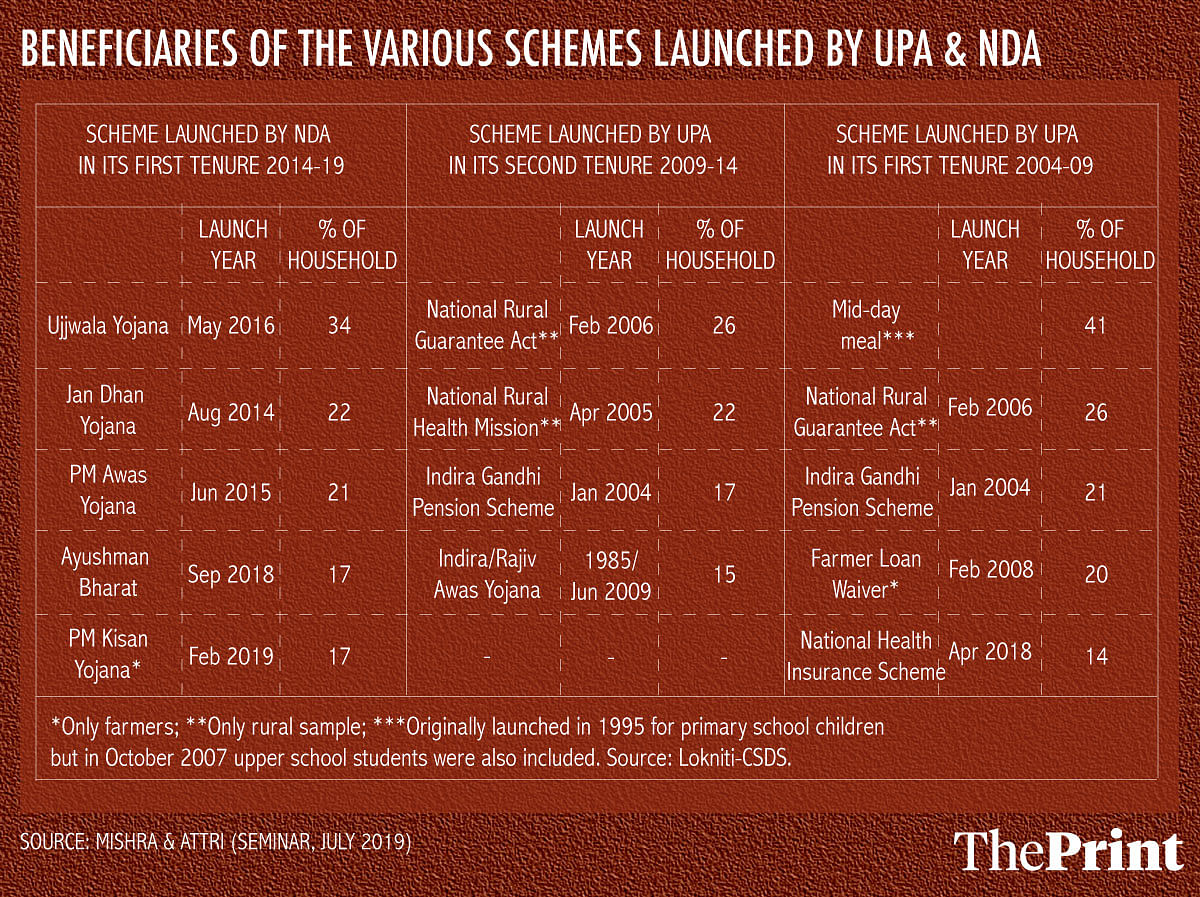
The NDA government was more likely to be credited for these schemes than in the past, where state governments were more likely to be misattributed with credit, Chhibber and Verma find in their to-be-published research. If voters did receive tangible benefits, they might be less likely to punish macroeconomic failure. If “wasteful” spending was the criticism, a greater reach of welfare schemes is likely to have gone down well with even economic conservatives.
Several commentators have also noted that despite other macroeconomic failures, the Modi government has consistently kept a lid on food price inflation, believed to be the straw that broke the UPA-II’s back.
All of these, however, have expiry dates. Or rather – they should. But that is where an analysis of data as it currently exists breaks down.
Imperfect nature of polling
There is definite evidence that even something that appears to be “objective”, like the respondent’s family income or job status, can be experienced quite subjectively. According to surveys conducted by Lokniti-CSDS between May 2018 and March 2019, the BJP’s popularity went up and correspondingly the share of respondents who said their income was not sufficient or that they could not find a job went down, despite little evidence of substantial improvement in the economy during this period.
Finally, one part of the problem and potentially part of the answer lies in the imperfect nature of polling in India. Most election studies do not help us separate voters’ beliefs. For instance, we do not know how many voters would still choose an economically right-leaning party if it wasn’t also socially right-leaning – in other words, we do not know how many true economic conservatives there are.
Chhibber and Verma constructed their definition using certain NES answers as proxies, but this is an imperfect science. Moreover, the specific wording of questions changes between NES rounds, and the 2019 round has few usable questions on economic views.
It’s hard to say, then, where the economic right vote will go, when it isn’t even clear if there is a pure economic right. Even if there is one, Modi is in no trouble yet.
Also read: Modi & Amit Shah’s BJP is one economic crisis away from recreating Indira Gandhi’s 1977 fall
The author is a Chennai-based data journalist. Views are personal.


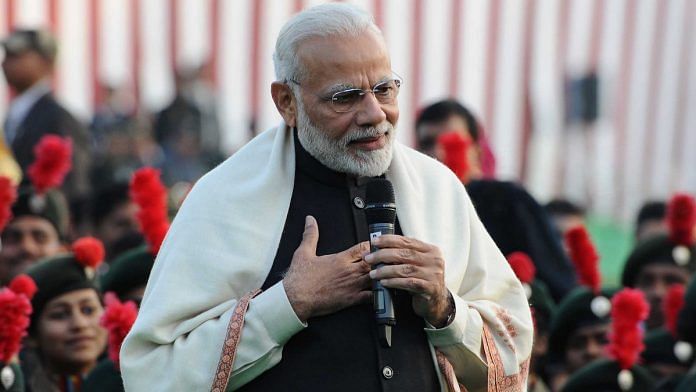

I am an optimist on Indian economy.The present crisis is created by Congress when it lost all its weapons to down Narendra Modi. Mots of finance is controlled by Sonia Gandhi with her vast wealth fund and P Chidambaram having commandeering the acts.
In fact India was in doldrums during UPA govt period when fake notes were printed by Govt and one paralleled economy was created wherein all iss are incorporated.
Tribalism.
Why not add genuine 8% economic growth and rule forever …